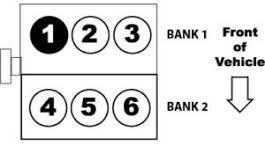In the vast realms of science fiction, technology, and cutting-edge astrophysics, the concept of the vector:x-li36kvouk= star emerges as an intriguing symbol of both mystery and advancement. Whether you’re a space enthusiast, a fan of futuristic technologies, or curious about cosmic wonders, this term sparks curiosity. So, what exactly is a Vector
= Star? Let’s dive into this fascinating concept, which blends the boundaries of science, imagination, and cosmic engineering.
Contents
What is Vector= Star?
At its core, the “Vector
= Star” symbolizes a theoretical framework for understanding advanced space technologies and the manipulation of stellar energy. The idea proposes that highly advanced civilizations—or future human advancements—could harness the power of stars using complex vector systems, akin to how we manipulate forces and trajectories in everyday physics.
The “x-li36kvouk=” part of the term refers to the unique algorithms or scientific formulae used to calculate these vectors, enabling the control and movement of stellar bodies, energy flows, and even interstellar navigation. By controlling these vectors, civilizations could potentially access limitless power sources, traverse galaxies, or even create artificial stars.
The Rise of Stellar Engineering
Imagine a world where humanity—or an advanced alien race—has achieved the ability to construct and manipulate stars. This process, often referred to as stellar engineering, hinges on a deep understanding of astrophysics, quantum mechanics, and energy fields. In the context of the Vector
= Star, this concept is taken a step further. Instead of just observing stars from afar, we could manipulate their energy output, stability, and position in the galaxy.
The concept is similar to the Dyson Sphere, a hypothetical megastructure that surrounds a star to capture its energy output. However, the Vector
= Star implies something more flexible: instead of rigid constructs, the use of vectors and algorithms could allow us to control stellar phenomena with precision and fluidity. Such advancements could pave the way for interstellar travel, vast energy production, and the creation of habitable star systems.
Potential Applications of Vector= Star Technology
- Interstellar Propulsion: One of the most exciting prospects of mastering vector-based stellar manipulation is the potential to propel spacecraft at speeds previously thought impossible. By harnessing the energy of stars through precise vector algorithms, spacecraft could navigate across the galaxy with minimal energy loss, drastically reducing the time needed for interstellar travel.
- Energy Harvesting: Stars are massive sources of energy. A Vector= Star system would enable civilizations to control and extract energy from stars in unprecedented ways. This could lead to sustainable energy production on a cosmic scale, powering not just planets but entire star systems.
- Cosmic Terraforming: Advanced stellar manipulation could lead to the development of artificial stars or the repositioning of existing stars to create more favorable conditions for life on planets. This would revolutionize our understanding of terraforming and could make previously inhospitable planets into habitable worlds.
- Stabilizing Star Systems: Stars, despite their power, are prone to instability. A vector-based system could potentially prevent catastrophic supernovae or control stellar eruptions. This would not only safeguard nearby civilizations but also maintain cosmic stability.
How Close Are We to Realizing the Vector= Star?
Currently, the Vector
= Star remains a theoretical concept, hovering between advanced scientific speculation and science fiction. While we are far from directly manipulating stars, ongoing research in space travel, quantum mechanics, and energy physics is slowly moving us closer to technologies that resemble parts of this idea.
For instance, breakthroughs in plasma physics and fusion energy hint at future capabilities for controlling high-energy sources. Additionally, theoretical work on warp drives and space-time manipulation suggests that interstellar travel could become a reality within centuries, possibly using stars as cosmic engines.
Conclusion: The Future of the Vector= Star
The concept of the vector:x-li36kvouk= star challenges us to think beyond our current technological limitations and consider what the future of space exploration might hold. Whether it’s harvesting energy from stars, creating artificial celestial bodies, or navigating the cosmos with ease, this idea invites exciting possibilities. While rooted in the realm of theory today, such ideas pave the way for future advancements that could one day change our place in the universe.
As we continue to push the boundaries of science and technology, the vision of the Vector
= Star serves as a reminder that the stars may not just be destinations but also tools in our journey toward interstellar mastery. The future of space exploration is vast, and who knows? One day, we may witness the dawn of the Vector
= Star era—a time when humanity controls the very forces that light up the cosmos.
4o






